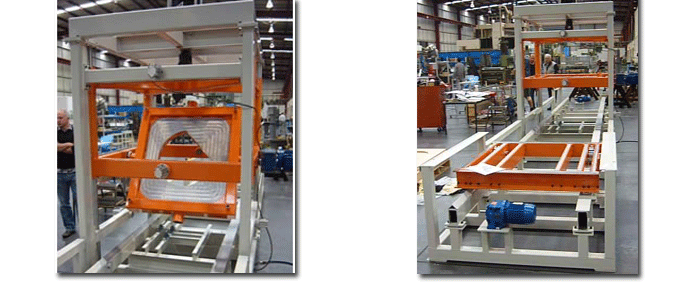
Specialist custom plastic fabricators, Plastec Formers Ltd, recently engaged JIPL to design a machine to increase their processing capability for one of their key contract production products.
Plastec have been manufacturing ‘Showerdomes’ for a number of years. They wanted to be able to increase their production rate whilst ensuring high-precision quality, and they were keen to investigate options in terms of heating and processing methods for manufacturing the large 1,200 x 1,200 Perspex sheets used in the process.
With the assistance of a Tech-NZ grant, JIPL was able to undertake investigative testing of heating methods. Their research found that by using special Infra Red (IR) heating elements in an innovative way, high heat transfer rates could be achieved to match the production speeds required by Plastec. From there, JIPL went on to design the entire Showerdome forming plant which has now been installed and is in operation at Plastec’s Tauranga factory.
How it works – the Showerdome Production Machine
The Plant is designed to produce six varying shapes of shower domes using a specially-designed power press which activates an air blow system to form the dome. The press has been designed with a rotating inner frame allowing two similar or differing, upper formers to be attached. The plant has a moveable carriage on either side of the centrally located press on which the various matching bottom formers are attached.
The JIPL-designed plant thus allows for two different dome shapes to be produced on the same plant, under continuous production conditions – which we believe is the first in the world.
A plastic sheet is manually loaded onto a dedicated former fixed to a movable carriage which is then sent into the Infra-red electrical heating unit. Once heated to the optimun temperature, the hot plastic sheet is moved directly to the press.
Due to the precision required in the manufacturing of the domes, the positioning of the formers needed to be accurate to ± 0.2 mm in all three dimensions, so a number of complex sensing systems were incorporated into the design. The carriage is positioned precisely under the press unit using a timing belt and positioning rams; and special sensors within the press frame determine the pressure of the compressed air, to achieve an accurate and consistent dome height.
A high efficiency cooling system cools the dome sufficiently to maintain its shape, and then the dome is released, with the press rising to its fully up position. The formed dome is then automatically moved to the offload area.
The press then automatically rotates to enable a different dome shape to be produced. This is designed to match plastic sheets heated on the opposite side of the press. This provides flexibility and improves the speed of production.
The forming plant is automated from the point of on- to off-load, with a PLC control system, monitoring numerous functions and real-time data on the Colour Touch Screen . The plant has been designed on a fail-to-safety basis, with integral light curtains and includes duplicate positive positioning / clamping rams.
